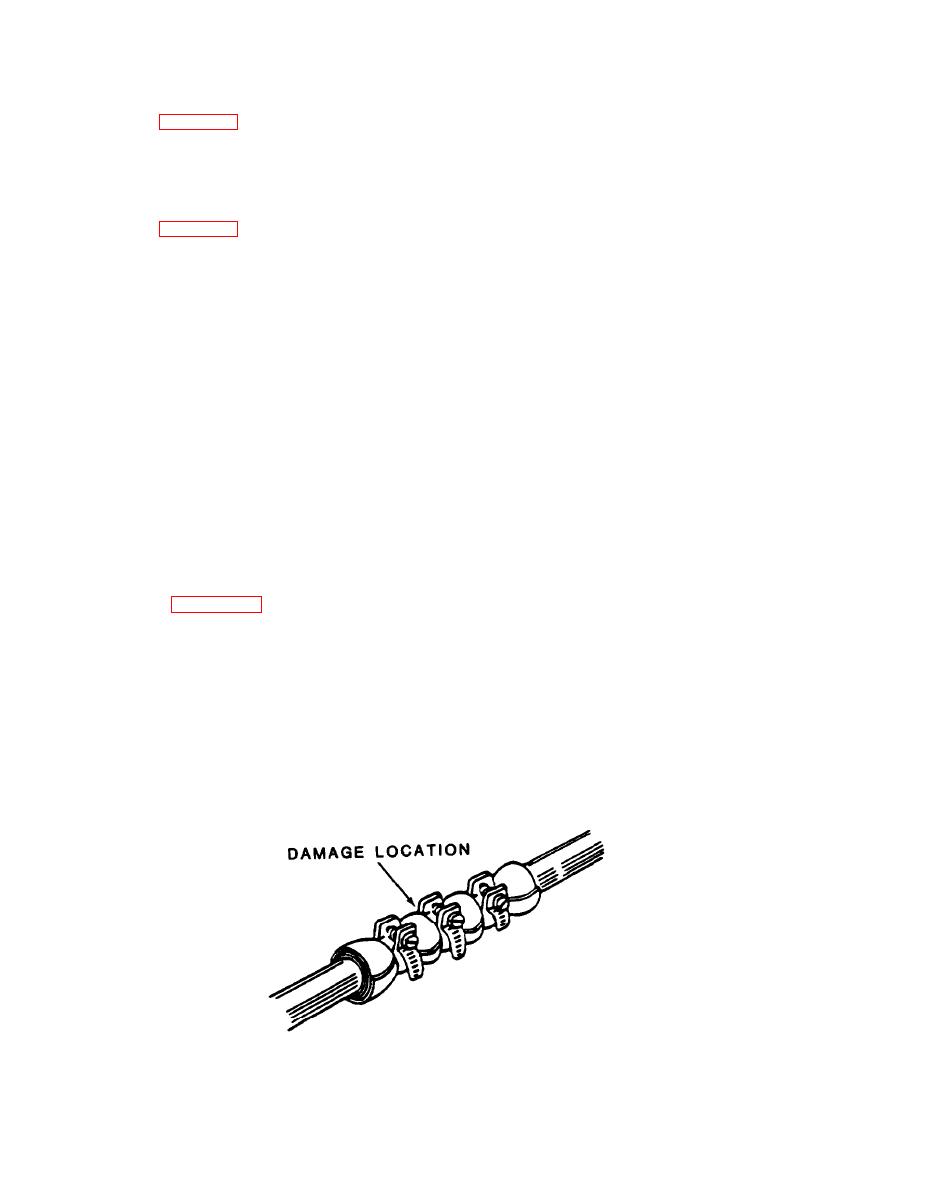 |
|||
|
|
|||
|
Page Title:
Low-Pressure Tube Repair Using Neoprene and Clamps. |
|
||
| ||||||||||
|
|
 TM 5-3835-222-BD
e. Check that the hydraulic reservoir level is at least at the minimum operating level. if this level
is low, refer to para 8-13 and fill the reservoir as needed.
f. Operate ail hydraulic subsystems (except those that may still be damaged) to remove air from the
system. Check carefully for fluid leaks. Tighten leaking fittings.
g. Check the hydraulic reservoir level again to ensure a sufficient hydraulic fluid level. if this level
is low, refer to para 8-13 and fill the reservoir as needed.
h. Record the BDAR action taken. When the mission is completed, as soon as practicable, repair
using standard maintenance procedures.
8-7.7.
Low-Pressure Tube Repair Using Neoprene and Clamps.
Limitations:
This fix is most effective for small punctures in low-pressure tubes.
Personnel/lime Required:
1 soldier 30 minutes
Materials/Tools:
Tool Kit
Hose Clamp(s)
Procedural Steps:
a. Use pliers to carefully bend the protruding tubing back as close to the original position as possible.
b. Wrap neoprene around the damaged area of the tube as tightly as possible.
c. Disassemble the hose clamps, wrap them around the neoprene piece, and reassemble.
d. Tighten the hose clamps directly over the damaged area of the tube with a screwdriver or wrench.
8-20
|
|
Privacy Statement - Press Release - Copyright Information. - Contact Us |